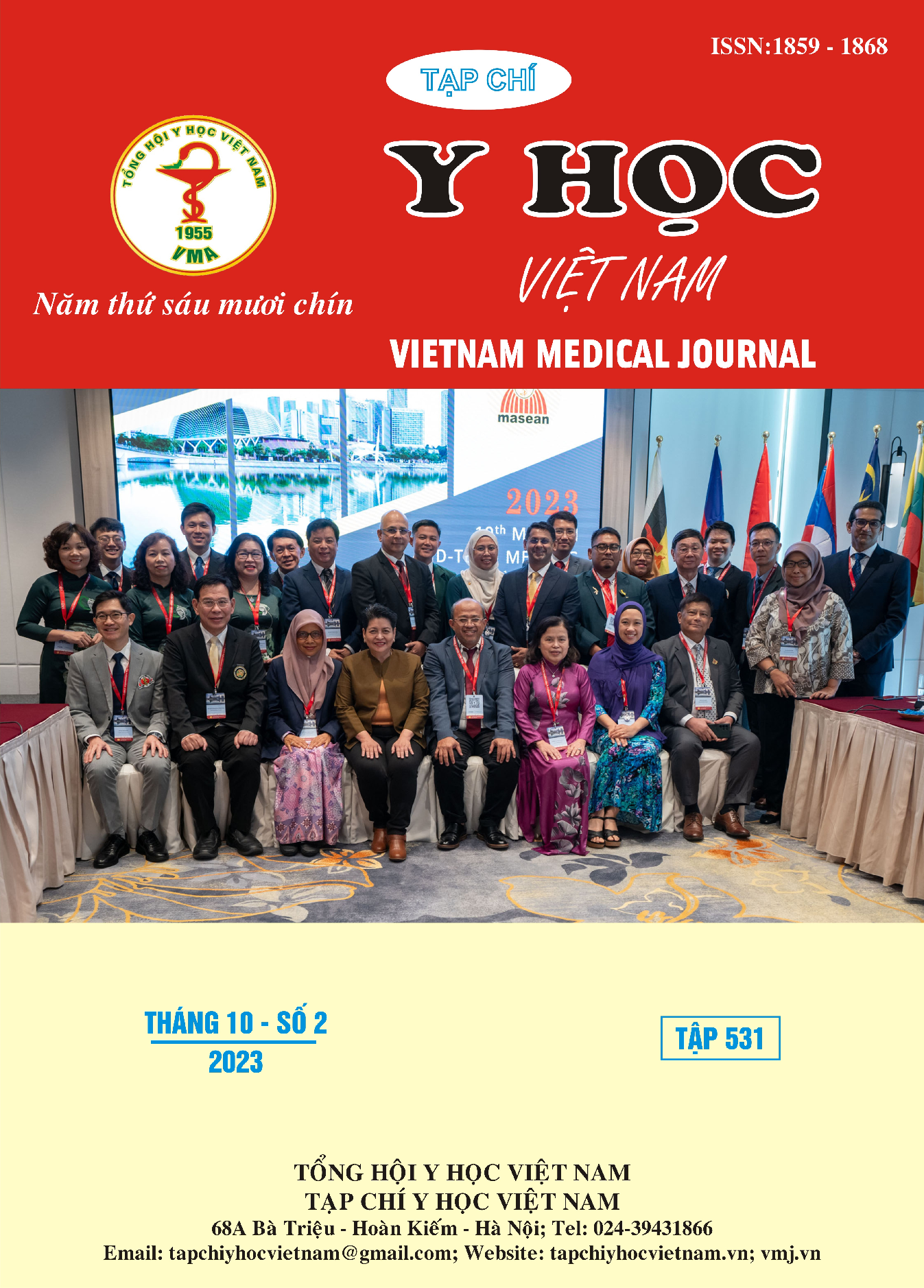SURVEY OF SOME CHARACTERISTICS OF LEPHAS AND LEPHY REACTIONS IN LEPHY PATIENTS IN HO CHI MINH CITY
Main Article Content
Abstract
Background: Leprosy is a chronic infectious disease caused by Mycobacterium leprae, mainly affecting the skin, peripheral nerves, mucous membranes and eyes. Objectives: Survey the characteristics of leprosy lesions, leprosy reactions lesions in Ho Chi Minh City from June 30, 2006 to June 30, 2016. Materials and methods: Study a series of cases on patients with leprosy reactions managed in Ho Chi Minh City. Results: 86 cases had medical records that met the criteria including 70 patients (81.4%) with reversal reactions and 16 patients (28.6%) with erythema nodosum leprosy. The difference between the two groups was statistically significant with p < 0.05 when diagnosing leprosy according to Ridley-Jopling but not statistically significant when diagnosing according to the World Health Organization. Conclusion: All patients had clinical manifestations typical of leprosy. To diagnose and classify leprosy according to the World Health Organization, it is still necessary to test the microbiological index of the earlobe and skin lesions. Pathology is especially valuable in cases where leprosy is suspected but bacteriological indicators are negative, or a Ridley-Jopling classification is needed.
Article Details
Keywords
Leprosy, leprosy reaction, reversal reaction, erythema nodosum.
References
2. Naafs B (2006) Treatment of Leprosy: science or politics? Trop Med Int Health 11: 268–278.
3. Ponnighaus, J. M., and P. E. M. Fine. "Sensitivity and specificity of the diagnosis and the search for risk factors for leprosy." Transactions of the Royal Society of Tropical Medicine and Hygiene 82.6(1988): 803-809.
4. Santos, Victor Santana, et al. "Evaluation of agreement between clinical and histopathological data for classifying leprosy." International Journal of Infectious Diseases 17.3 (2013): e189-e192.
5. Saunderson, P. "The epidemiology of reactions and nerve damage." Lepr rev 71.Suppl (2000): S106-10.
6. Saunderson, Paul, and Guido Groenen. "Qué signos físicos son más útiles para el diagnóstico de la lepra? Propuesta basada en la experiencia del proyecto AMFES, Alert Etiopía." Fontilles, Rev. leprol (2000): 383-395.
7. Sharma, Neelu, et al. "A study of leprosy reactions in a tertiary hospital in Delhi". The Journal of dermatology 31.11 (2004): 898-903.
8. Van Brakel, Wim H., et al. "The INFIR Cohort Study: investigating prediction, detection and pathogenesis of neuropathy and reactions in leprosy. Methods and baseline results of a cohort of multibacillary leprosy patients in north India."Leprosy review 76.1 (2005): 14-34.
9. WHO (2020), "Leprosy/Hansen Disease: Management of reactions and prevention of disabilities". Technical guidance.


